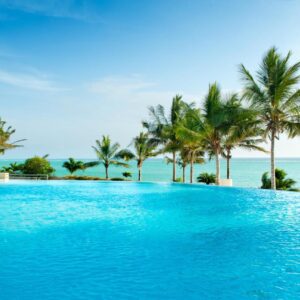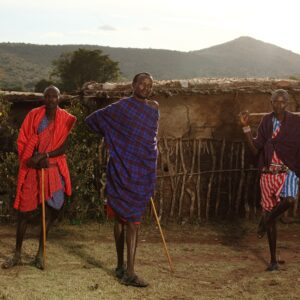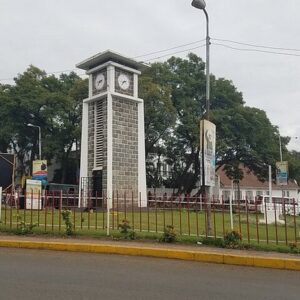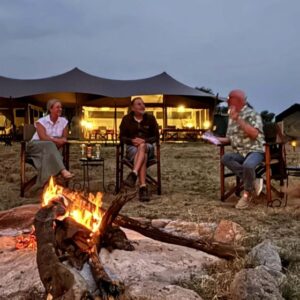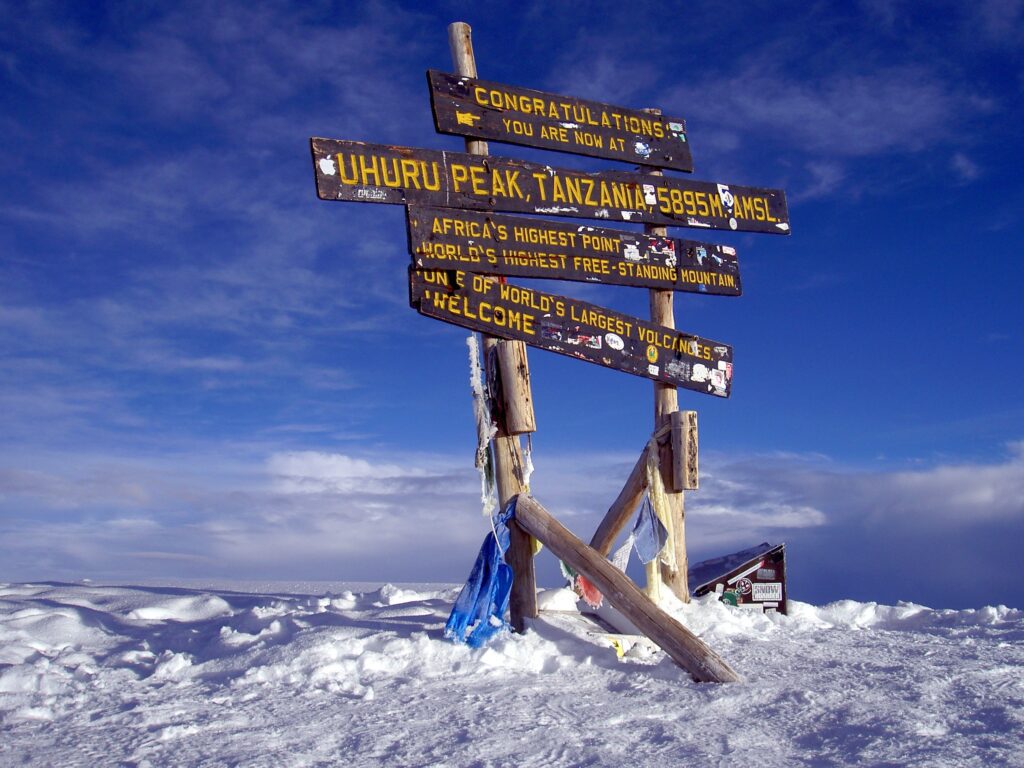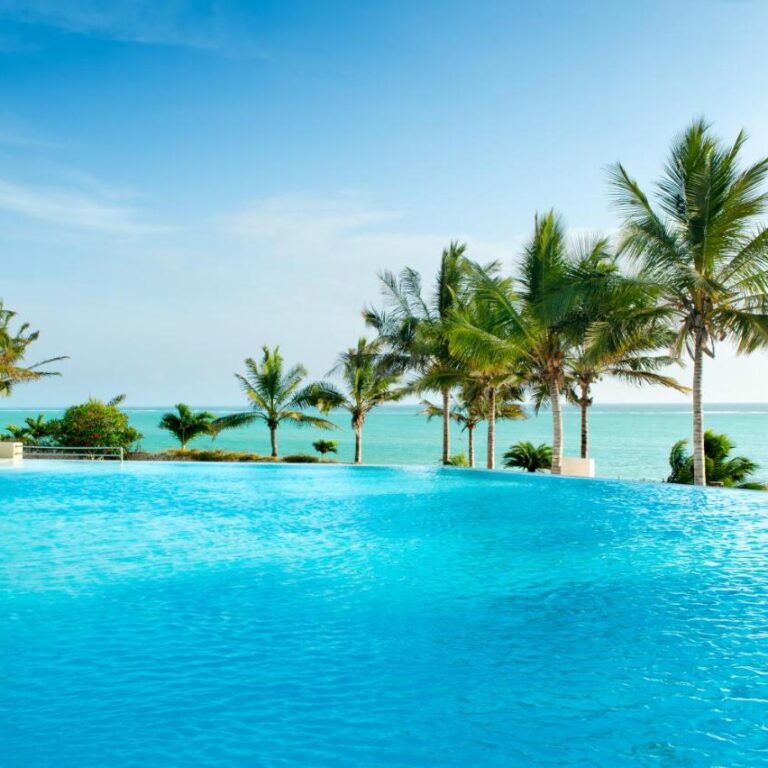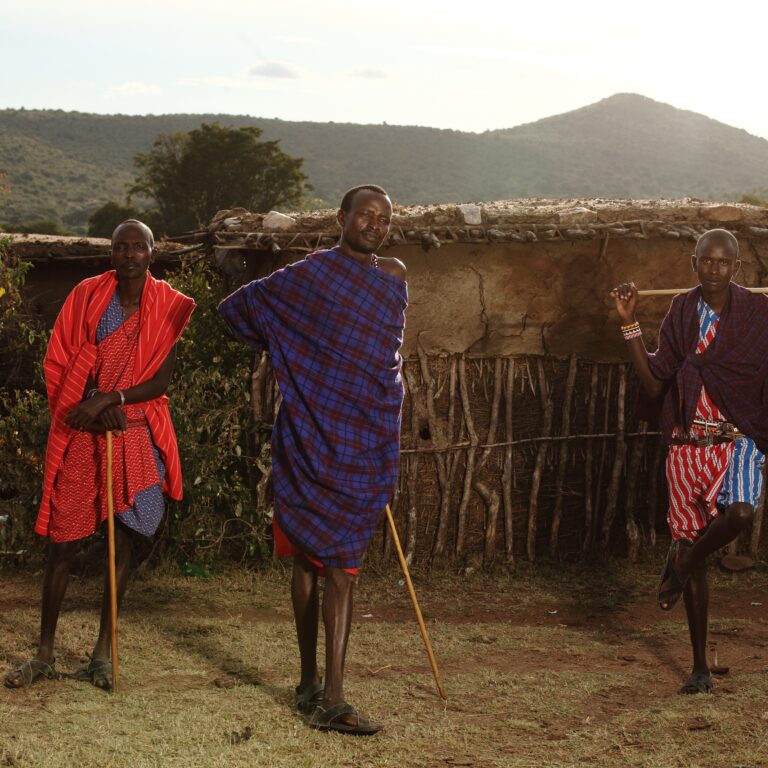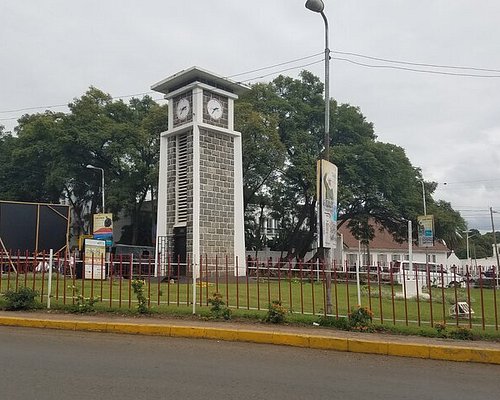Embarking on the Kilimanjaro Challenge through the compare Mount Kilimanjaro’s Success Rates On Various routes. Mount Kilimanjaro, towering majestically over the African plains. Has long captivated the hearts of adventurers and mountaineers worldwide. Rising to an impressive 5,895 meters (19,341 feet) above sea level. Kilimanjaro stands as the tallest freestanding mountain in the world. Each year, thousands of intrepid souls from all walks of life gather to undertake the ultimate challenge of reaching its summit.
Undoubtedly, the success rate of scaling Kilimanjaro varies depending on the route taken. The level of preparation, and the expertise of the guiding team. In this article, we will delve into the intricacies of the Kilimanjaro Success Rate (by Routes) ranging from 45% to 98%. Whether you are an experienced mountaineer or a first-time trekker. This comprehensive guide aims to provide all the essential information you need for a successful ascent.
Kilimanjaro Success Rate (by Routes) Overview. Before we delve into the individual routes and their respective success rates. Let’s take a moment to understand the factors that contribute to the overall success of reaching Kilimanjaro’s summit.
1. Marangu Route Success Rate is 60%
The Marangu Route, often referred to as the Coca-Cola Route. Is the oldest and most well-established path to Kilimanjaro’s summit. It is known for its comfortable huts, making it a popular choice among less adventurous trekkers. However, its success rate is relatively lower compared to other routes due to its rapid ascent profile. Marangu Route success rate, Coca-Cola Route, huts, rapid ascent, popularity, trekking difficulty.
The success rate of the Marangu Route ranges from 45% to 60%. While this might seem lower than other routes, it is important to remember that the journey itself is an extraordinary experience.
Also Marangu Route on Mount Kilimanjaro is the only route with huts for accommodation, including Mandara, Horombo, and Kibo Huts. The Marangu Route map follows a direct path from Marangu Gate to Uhuru Peak. Passing through rainforest, moorland, alpine desert, and arctic zones. Covering 72 km (45 miles) round trip, it is the shortest of the main Kilimanjaro routes. The elevation starts at 1,860m (6,102 ft) at Marangu Gate, reaching 5,895m (19,341 ft) at the summit.
The starting and ending point is Marangu Gate. Interesting facts: It’s called the “Coca-Cola” route due to its relative comfort, but the fast ascent gives it a lower success rate. It’s the only route where climbers ascend and descend the same path. The lush rainforest along the way is home to blue monkeys and colobus monkeys.
2. Rongai Route Success Rate is 80%
The Rongai Route, offering a less-crowded and more serene approach to Kilimanjaro. Has gained popularity in recent years. Unlike some of the other busier routes, Rongai allows trekkers to experience the untamed wilderness and unique landscapes of Kilimanjaro’s northern side. This route begins on the Tanzanian side near the Kenyan border and gradually ascends through a diverse range of ecosystems.
Rongai Route, less-crowded, Tanzanian side, Kenyan border, diverse ecosystems. The Rongai Route provides an enchanting experience for trekkers seeking solitude and a sense of adventure. It starts in the northern wilderness of Kilimanjaro. Offering picturesque views of the Kenyan plains and the magnificent Mawenzi Peak. As you trek, you’ll traverse through lush rainforests, heathlands, and alpine desert, witnessing the unique flora and fauna that call these landscapes home.
The Rongai Route on Mount Kilimanjaro offers tented accommodation at campsites like Simba, Kikelewa, Mawenzi Tarn, and Kibo Camps. The Rongai Route map follows a gradual ascent from the northern side of Kilimanjaro. Crossing into the southern side for descent via the Marangu Route. Covering approximately 74 km (46 miles), it is one of the less crowded routes.
The Rongai Route on Kilimanjaro elevation starts at 1,950m (6,398 ft) at Rongai Gate and reaches 5,895m (19,341 ft) at Uhuru Peak. The starting point is Rongai Gate, and the ending point is Marangu Gate. Interesting facts Rongai Route on Kilimanjaro is the only route approaching Kilimanjaro from the north. Offering drier conditions and chances to see wildlife like antelopes and colobus monkeys. It’s a great choice for a quieter, scenic climb with high success rates due to gradual ascent.
3. Machame Route Success Rate is 95%
The Machame Route, renowned for its stunning scenery and diverse landscapes, is a popular choice among trekkers aiming to conquer Kilimanjaro. As one of the most scenic routes to Uhuru Peak, it offers a rich tapestry of experiences and a success rate that ranges from 75% to 85%. Embarking on the Machame Route promises an unforgettable adventure through nature’s splendor. Providing trekkers with both challengeand rewards along the way.
Machame Route, Kilimanjaro success rate, scenic route, stunning landscapes, diverse ecosystems. The journey along the Machame Route begins in the lush rainforests, where the air is thick with moisture and the vibrant flora and fauna create a captivating ambiance. As trekkers ascend, the landscape transforms into heathlands and moorlands, offering panoramic views of the surrounding wilderness. The final push to the summit leads through the iconic Baranco Wall, an impressive volcanic formation that adds an element of thrill to the climb.
The Machame Route on Mount Kilimanjaro offers tented accommodation at campsites like Machame, Shira, Barranco, Karanga, Barafu, and Mweka Camps. The Machame Route map follows a scenic southern approach, offering stunning views and diverse landscapes. Covering 62 km (37 miles), it is one of the most challenging yet popular routes. The elevation starts at 1,640m (5,380 ft) at Machame Gate, reaching 5,895m (19,341 ft) at Uhuru Peak.
The starting point iof Machame Route is Machame Gate, and the ending point is Mweka Gate. Interesting facts: Known as the “Whiskey Route”, it is steeper and more demanding but offers better acclimatization. The route passes through lush rainforest. Shira Plateau, Barranco Wall, and alpine desert. It is ideal for adventurous trekkers seeking a more challenging and rewarding climb with high success rates.
4. Lemosho Route Success Rate is 95%
The Lemosho Route, revered for its breathtaking scenery and gradual ascent. An enticing choice for trekkers seeking an unparalleled Kilimanjaro experience. As one of the newer routes, Lemosho offers a pristine wilderness adventure with a success rate that ranges from 85% to 90%.
Embarking on the Lemosho Route promises trekkers an unforgettable journey through diverse ecosystems. Making it a preferred path to conquer the Roof of Africa. Exploring the Untamed Beauty, Lemosho Route, Kilimanjaro success rate, breathtaking scenery, gradual ascent, pristine wilderness.
The Lemosho Route on Mount Kilimanjaro offers tented accommodation at campsites like Mti Mkubwa, Shira, Barranco, Karanga, Barafu, and Mweka Camps. The Lemosho Route map follows a western approach, crossing the Shira Plateau before merging with the Machame Route. Covering 70 km (43 miles), it is one of the longest but most scenic routes.
The elevation starts at 2,100m (6,890 ft) at Lemosho Gate, reaching 5,895m (19,341 ft) at Uhuru Peak. The starting point is Lemosho Gate, and the ending point is Mweka Gate. Interesting facts: It is considered the most beautiful route, offering excellent acclimatization and diverse landscapes. Trekkers pass through rainforest, heath, moorland, alpine desert, and glacial zones. It has a high success rate and is perfect for those seeking a scenic, less crowded trek.
5. Shira Route Success Rate is 85%
for its mesmerizing landscapes and unique approach to Kilimanjaro, offers trekkers an unforgettable journey on the mountain’s western side. As a variation of the Lemosho Route, Shira shares its starting point at the Shira Plateau, where trekkers are immersed in the grandeur of the high-altitude moorlands. With a success rate ranging from 80% to 90%, the Shira Route presents a thrilling path to the Roof of Africa. The Majesty of Shira Plateau, Shira Route, Kilimanjaro success rate, mesmerizing landscapes, unique approach, high-altitude moorlands. High Success Rate: With a success rate ranging from 80% to 90%, the Shira Route provides trekkers with favorable odds of reaching the summit.
The Shira Route commences at the Shira Plateau, a high-altitude volcanic plateau that stands as a spectacle of natural beauty. As trekkers ascend, they are greeted by stunning vistas of Kilimanjaro’s volcanic cones and the vast expanse of the plateau charm lies in its varied terrain and mesmerizing landscapes, making it a rewarding choice for those seeking a distinctive experience.
The Shira Route on Mount Kilimanjaro offers tented accommodation at campsites like Shira 1, Shira 2, Barranco, Karanga, Barafu, and Mweka Camps. Map follows a western approach, beginning at a higher altitude before joining the Lemosho and Machame Routes. Covering 56 km (35 miles), it is one of the shorter but more challenging routes.
The elevation starts at 3,600m (11,811 ft) at Shira Gate, reaching 5,895m (19,341 ft) at Uhuru Peak. The starting point is Shira Gate, and the ending point is Mweka Gate. Interesting facts: It begins with a drive to a high-altitude starting point, increasing the risk of altitude sickness. The route offers stunning views of the Shira Plateau and diverse landscapes, making it ideal for experienced trekkers seeking adventure.
6. Northern Circuit Success Rate is 98%
The Northern Circuit, renowned for its off-the-beaten-path allure and magnificent panoramas, represents the most extended route on Kilimanjaro. Offering trekkers a truly immersive experience with unparalleled success rates ranging from 90% to 98%, the Northern Circuit promises an extraordinary adventure like no other.
Embark on this ultimate expedition to conquer Kilimanjaro and witness its untouched beauty from every angle. The Northern Circuit is the newest route available and its nine-day hike circumnavigates the whole mountain. Long and safe, this route has the highest success rate of all routes combined, with a success rate hovering above 95%.
The Northern Circuit Route on Mount Kilimanjaro offers tented accommodation at campsites like Mti Mkubwa, Shira, Moir, Buffalo, Third Cave, School Hut, and Mweka Camps. The Northern Circuit Route map follows a western approach, circling the entire northern slopes before reaching Uhuru Peak. Covering 98 km (61 miles), it is the longest route, allowing for excellent acclimatization.
The elevation starts at 2,100m (6,890 ft) at Lemosho Gate, reaching 5,895m (19,341 ft) at Uhuru Peak. The starting point is Lemosho Gate, and the ending point is Mweka Gate. Interesting facts: This is the newest and most scenic route, offering low traffic and 360° views of Kilimanjaro. It has the highest success rate due to its gradual ascent, making it perfect for those seeking a longer, less crowded trek.
7. Umbwe Route Success Rate is 60% and 70%
The Umbwe Route, known for its challenging and steep ascent, presents intrepid trekkers with an adventure of a lifetime. As one of the more difficult routes on Kilimanjaro, the Umbwe Route offers a success rate that ranges from 45% to 60%. This route is reserved for experienced climbers seeking a demanding and rewarding journey to Uhuru Peak.
Umbwe Route, Kilimanjaro success rate, challenging ascent, steep terrain, experienced climbers, initiates from the south of Kilimanjaro, propelling trekkers on an intense and vertical ascent. This trail is characterized by its steep terrain, which requires physical endurance and mental fortitude. Despite the challenges, the Umbwe Route treats trekkers to breathtaking views and a true sense of accomplishment upon reaching the summit.
The Umbwe Route on Mount Kilimanjaro offers tented accommodation at campsites like Umbwe, Barranco, Karanga, Barafu, and Mweka Camps. The Umbwe Route map follows a steep, direct southern approach, quickly gaining altitude before merging with the Machame Route. Covering 53 km (33 miles), it is the shortest but steepest route.
The elevation starts at 1,600m (5,249 ft) at Umbwe Gate, reaching 5,895m (19,341 ft) at Uhuru Peak. The starting point is Umbwe Gate, and the ending point is Mweka Gate. Interesting facts: This is the most challenging route, recommended only for experienced climbers due to rapid altitude gain and low acclimatization time. It is also one of the least crowded routes, offering stunning views of Kilimanjaro’s southern glaciers and dramatic ridges.
Acclimatization: The Key Factors to Success
As you ascend Kilimanjaro, the air thins, and the oxygen levels decrease significantly. Proper acclimatization is vital to combat altitude sickness and increase your chances of reaching the Uhuru Peak successfully. All routes have different itineraries designed to allow trekkers enough time to acclimatize properly.
Professional Guiding and Support
A knowledgeable and experienced guiding team can make all the difference in your Kilimanjaro expedition. They will not only navigate the route but also provide invaluable support, encouragement, and safety measures throughout the journey.
Physical Fitness and Mental Preparedness
Conquering Kilimanjaro demands physical endurance and mental strength. Regular physical training and mental preparedness are crucial to tackle the demanding terrain and keep motivation high during the trek.
Weather and Climate
Kilimanjaro’s weather can be unpredictable, with temperature variations and changing climatic conditions. Being informed about the weather patterns for your chosen route will help you plan accordingly and enhance your success rate.
What is the Success Rate of Climbing Kilimanjaro?
The success rate of climbing Mount Kilimanjaro varies but generally falls around 65-75%. Factors like route choice, acclimatization, weather conditions, and physical fitness significantly impact success. Longer routes provide better chances of acclimatization, improving the likelihood of reaching the summit. Proper preparation and guidance are key to achieving success.
Kilimanjaro Route success rates ascend and descent.
The success rates for ascending and descending Kilimanjaro vary by route. The Lemosho, Machame, and Northern Circuit routes offer the highest success rates, around 80-90%, due to better acclimatization time. The Marangu route, often called the “Coca-Cola” route. Has a lower success rate, around 60%, due to less time for acclimatization. Successful descents typically occur without major issues, but physical exhaustion or altitude-related conditions can cause delays or challenges.
Mount Kilimanjaro Route top Activities
Mount Kilimanjaro offers various activities across its routes. Popular activities include hiking through diverse ecosystems, from rainforests to alpine deserts. Climbers can enjoy wildlife sightings, such as monkeys and birds, on lower routes like Machame. The summit experience is unforgettable, with panoramic views at Uhuru Peak. Adventurers also participate in cultural experiences, visiting local villages, and learning about the Chagga people’s traditions. Photography, stargazing, and bonding with fellow climbers are also key highlights of the journey.

